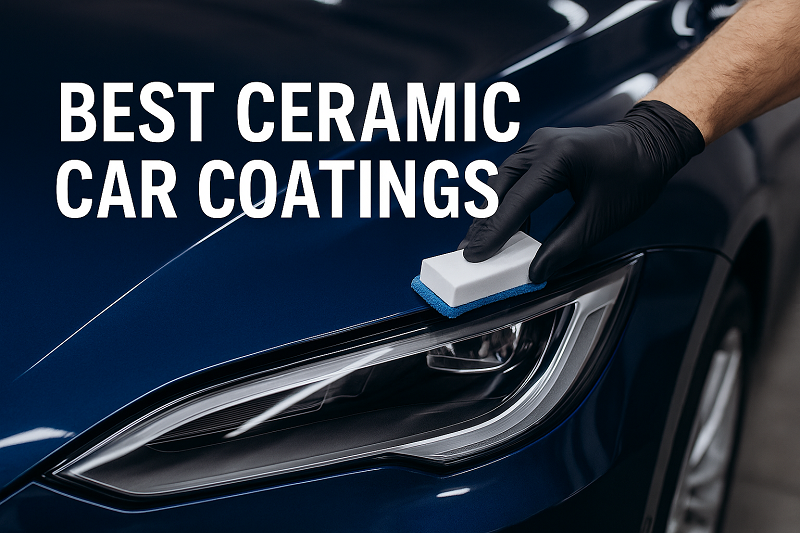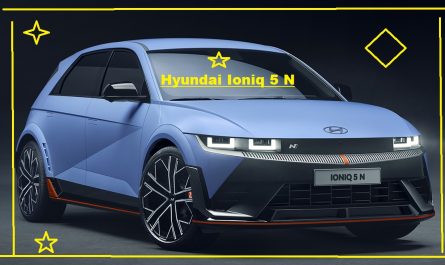Ceramic car coatings have revolutionised the way people protect and preserve the beauty of their vehicles. These coatings offer a cutting-edge alternative to traditional waxes and sealants by providing a high-gloss, hydrophobic, and long-lasting layer of protection. Unlike old-school methods that wear off within weeks or months, ceramic coatings bond at a molecular level to the surface of the car, offering durable shielding from environmental hazards like UV rays, bird droppings, road salts, and acid rain. In this article, we’ll explore what makes ceramic coatings the best option for long-term vehicle care, how they work, and what to look for in a quality product. With technology advancing rapidly in the automotive detailing world, ceramic coatings have emerged as the gold standard for paint protection—and choosing the right one is crucial.

Understanding the Science Behind Ceramic Coatings
Best Ceramic Car Coatings, also referred to as nano-ceramic coatings, are primarily composed of silicon dioxide (SiO2) or titanium dioxide (TiO2). These compounds create a chemical bond with the vehicle’s factory paint and form an ultra-thin, invisible layer that is highly resistant to contaminants. When applied correctly, the result is a hardened surface that can repel water, dirt, oil, and harmful chemicals, significantly reducing the risk of paint damage. The nanotechnology in ceramic coatings fills in microscopic imperfections on the car’s surface, creating a smooth and reflective finish that enhances the color depth and gloss of the paint. This innovative barrier is not merely topical; it chemically bonds with the paint, ensuring much longer-lasting protection compared to wax or sealant alternatives.
Why Ceramic Coatings Are Superior to Traditional Protection
For years, car owners relied on waxing as a way to keep their vehicles looking glossy and new. While wax offers short-term shine, it simply cannot compare with the endurance and chemical resistance of ceramic coatings. Wax begins to degrade in the sun and under harsh weather conditions, usually lasting just a few weeks before needing reapplication. In contrast, ceramic coatings can last anywhere from two to five years or even longer, depending on the type and quality used. This makes them an economical and time-saving choice for car enthusiasts and daily drivers alike. Furthermore, ceramic coatings do not wash away with soap and water and do not need constant maintenance, making them ideal for people who want long-term results without frequent detailing.
Benefits That Make Ceramic Coatings a Must-Have
The benefits of ceramic coatings go far beyond visual appeal. One of the most important advantages is the hydrophobic effect it provides. This quality ensures that water beads up and rolls off the surface, taking dirt and grime with it. This makes washing your car significantly easier and reduces the chance of scratches caused by dirt dragging across the paint. Another major benefit is UV protection. Prolonged exposure to the sun can cause your vehicle’s paint to fade and oxidise. Ceramic coatings block harmful UV rays, preserving the original color of your car for years. Moreover, they offer chemical resistance, protecting the surface from acidic contaminants like bird droppings, tree sap, and road salt—all of which can corrode paint. These protective properties make ceramic coatings invaluable in both hot climates and colder regions where roads are treated with harsh chemicals.
Application Process and Professional vs. DIY Options
Applying a ceramic coating is not as simple as slathering on wax. It requires meticulous surface preparation to ensure proper bonding and maximum effectiveness. The car’s paint must be cleaned thoroughly, often with a process known as paint correction, which removes swirl marks, scratches, and oxidation. Once the surface is pristine, the ceramic coating can be applied in small sections using an applicator pad. The coating is then leveled and buffed off after a short curing period. This process requires skill, patience, and ideal environmental conditions, which is why many people opt for professional application. Professional detailers typically use high-grade coatings that are not available to the general public, offering longer-lasting protection and better results. However, there are also high-quality DIY ceramic coatings on the market for those who are comfortable with detailing and want to save money. These products often include detailed instructions and are suitable for enthusiasts with moderate experience in car care.
What to Look for in the Best Ceramic Coating
Not all ceramic coatings are created equal, and several factors must be considered before making a choice. First, consider the SiO2 content, as a higher percentage usually correlates with better performance and longevity. However, higher SiO2 content can also make the product more challenging to apply, so balance is essential. Next, check the product’s durability rating. Some coatings last for a year, while others claim up to five years or more. Be cautious of exaggerated marketing claims and focus on reviews from real users or professionals. Ease of application is another key factor, especially for DIYers. Some products have shorter flash times and may harden quickly, which can make them difficult to buff off if you’re not experienced. It’s also worth checking whether the product includes additional features such as water-spot resistance, UV inhibitors, or enhanced gloss enhancement technology. Finally, ensure the product comes from a reputable brand with good customer support and available guidance materials like videos and written instructions.
Performance on Various Vehicle Surfaces
One of the often-overlooked strengths of ceramic coatings is their versatility. These coatings are not just limited to painted surfaces. They can be used on metal, plastic trim, glass, wheels, and even headlights. On metal parts like chrome or aluminum trim, ceramic coatings prevent tarnishing and corrosion. On plastic trim, they restore and preserve the original color, preventing fading caused by UV rays. When applied to windshields and windows, they offer rain-repellent properties that enhance visibility during bad weather. Coated wheels become easier to clean and are more resistant to brake dust buildup. Some ceramic coatings are specifically formulated for certain areas like exhaust tips or engine bays where temperatures run much higher. This multi-surface capability makes ceramic coatings a comprehensive solution for protecting your entire vehicle, not just the paintwork.
Common Myths and Misconceptions About Ceramic Coatings
Despite their growing popularity, there are still several myths surrounding ceramic coatings that lead to unrealistic expectations. One common misconception is that ceramic coatings make your car completely scratch-proof. While they do offer increased hardness and minor abrasion resistance, they will not prevent damage from serious impacts or deep scratches. They also don’t eliminate the need for washing your car. Although dirt doesn’t adhere as easily to a ceramic-coated surface, regular cleaning is still necessary to maintain its appearance and performance. Another myth is that once applied, a ceramic coating lasts forever. Even the best coatings degrade over time and may require reapplication or maintenance products to extend their lifespan. Some people also wrongly assume that ceramic coatings will fix existing paint defects. In reality, the coating will lock in those imperfections unless the paint is corrected beforehand. Dispelling these myths is essential to having realistic expectations and getting the most out of your ceramic coating investment.
Maintenance Tips to Prolong the Life of Ceramic Coatings
While ceramic coatings are low-maintenance compared to traditional wax, some care is still required to keep them performing at their best. The most crucial step is regular washing using the two-bucket method and pH-neutral car shampoo. Avoid using automatic car washes with abrasive brushes, as these can wear down the coating prematurely. Drying your vehicle with a microfiber towel helps avoid water spots, which can be particularly noticeable on coated surfaces. Some brands offer dedicated maintenance sprays or ceramic booster products that help rejuvenate the coating and enhance gloss. These can be applied every few months to keep the surface fresh. It’s also advisable to avoid harsh chemicals and acidic cleaners, especially when dealing with bird droppings or road tar. Instead, use dedicated automotive surface cleaners that are safe for ceramic coatings. Performing a decontamination wash every 6 to 12 months using an iron remover or clay bar can help preserve the slickness and ensure contaminants don’t embed in the coating.
Price and Value: Is It Worth the Investment?
One of the most frequently asked questions about ceramic coatings is whether they are worth the cost. The answer largely depends on your goals and how much value you place on your vehicle’s appearance and longevity. While the upfront cost for professional ceramic coating can be high, often ranging between $800 to $2,000 or more depending on the car’s size and condition, the long-term savings are substantial. You’ll spend less on car washes, waxing, and repainting from UV damage or corrosion. DIY ceramic coatings are more affordable, typically costing between $50 and $150 per kit, and still offer impressive performance if applied correctly. Considering the years of protection and the enhancement in resale value that a well-maintained car brings, the investment in ceramic coating pays off for many car owners.
How Ceramic Coatings Are Evolving with Technology
The field of ceramic coatings continues to evolve with advancements in chemical engineering and application methods. Some of the newest developments include graphene-infused ceramic coatings, which offer improved heat resistance, anti-static properties, and even greater hydrophobicity. Graphene coatings are gaining traction for their durability and self-cleaning abilities, often outperforming traditional SiO2-based coatings. Manufacturers are also developing coatings with built-in UV indicators that visually fade over time, signaling when a reapplication is needed. This helps users maintain their vehicle’s protection without guessing. Additionally, faster-curing formulations are making it easier for DIY enthusiasts to achieve professional-level results at home. With ongoing innovation, ceramic coatings are becoming more accessible, effective, and tailored to individual needs, whether you’re protecting a daily commuter or a high-end show car.
Final Thoughts: Choosing the Right Ceramic Coating for Your Needs
When it comes to protecting your vehicle and keeping it looking pristine, ceramic coatings stand in a league of their own. Their ability to offer long-lasting, high-performance protection against environmental threats makes them a superior alternative to traditional methods. Whether you opt for a professional-grade coating or a high-quality DIY product, the benefits in appearance, durability, and ease of maintenance are hard to ignore. The key to getting the most out of a ceramic coating lies in selecting the right product, applying it with care, and performing consistent yet simple maintenance. As ceramic coating technology continues to advance, car owners now have more effective and accessible solutions than ever before. Investing in the best ceramic car coating is not just about preserving aesthetics—it’s about enhancing the long-term value and enjoyment of your vehicle.
FAQs About Ceramic Car Coatings
What is the lifespan of a ceramic coating?
Most ceramic coatings last between 2 to 5 years, depending on the product quality and how well the vehicle is maintained.
Can ceramic coatings be applied at home?
Yes, many DIY ceramic coatings are available and suitable for home use, though proper preparation and application are essential.
Do ceramic coatings protect against scratches?
They provide some resistance to light scratches but are not scratch-proof. Proper care is still necessary to avoid damage.
Will ceramic coating make my car maintenance-free?
No, but it will significantly reduce the effort needed to clean and maintain your vehicle compared to unprotected surfaces.
Can I wax over a ceramic coating?
It’s not necessary and may even interfere with the coating’s hydrophobic properties. Instead, use ceramic-specific boosters if needed.


